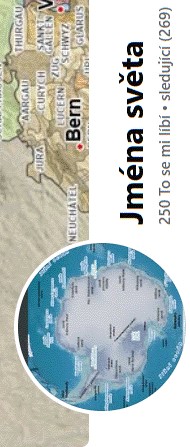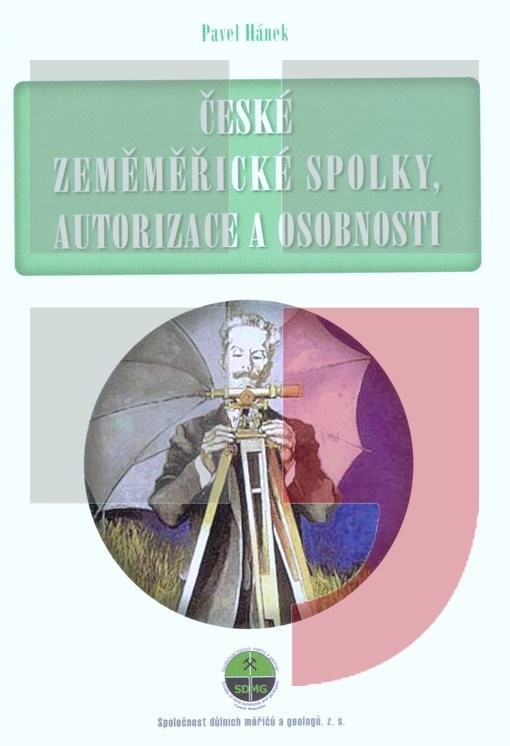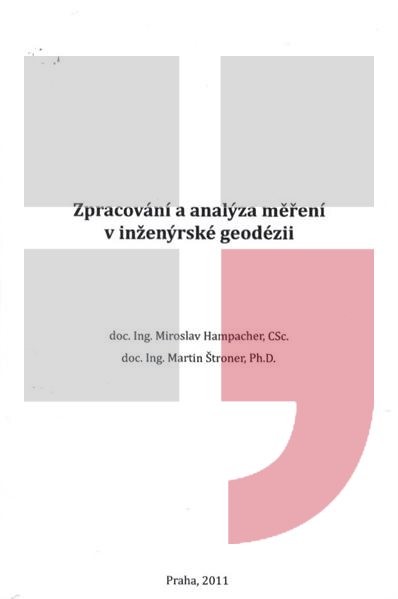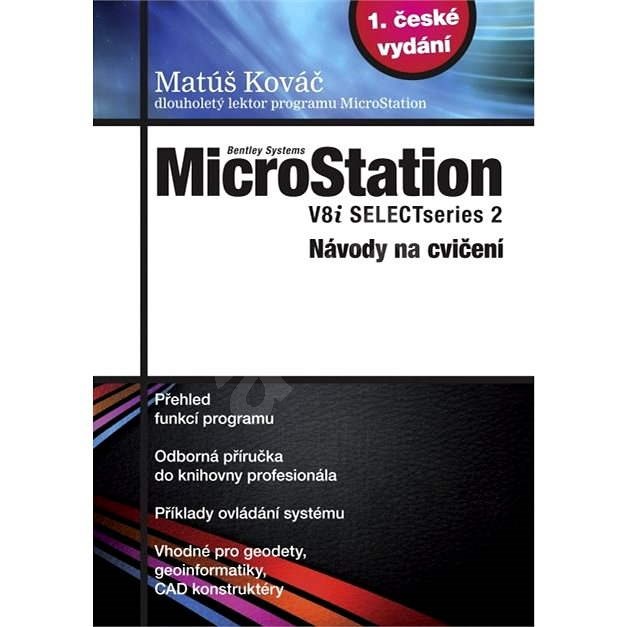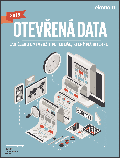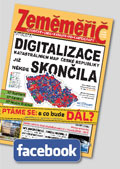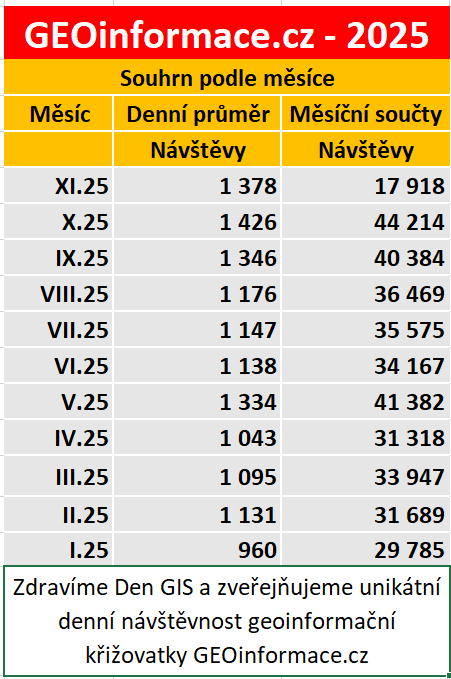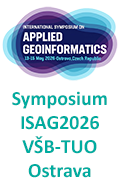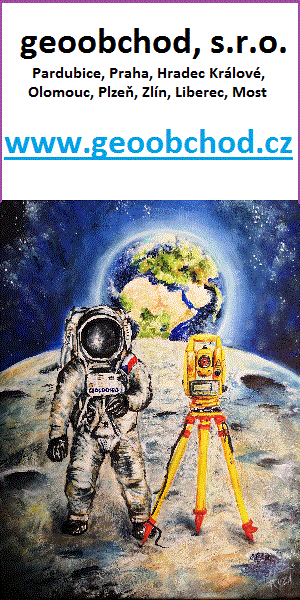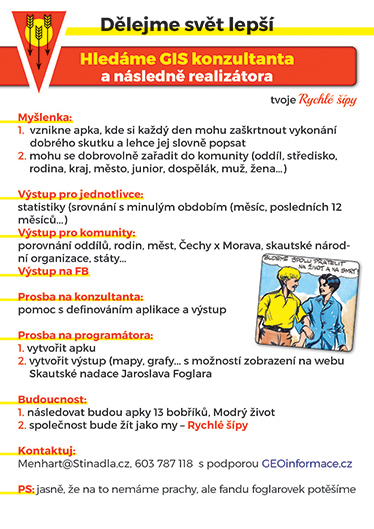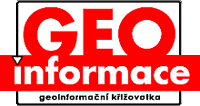zprávy
zdroje zpráv:Teledyne Optech to showcase GIS tools at Esri 2018 User Conference
27.6.2018 16:50 GISCafe.com Webcasts-Webinars June 27, 2018— Teledyne Optech is pleased to announce that it will be exhibiting at the Esri 2018 User Conference in San Diego, CA, USA, on …rada/vrchní referent – návrh zápisu, kontrola a zplatnění
27.6.2018 15:57 ČÚZK /Urady/Katastralni-urady/Katastralni-urady/Katastralni-urad-pro-hlavni-mesto-Prahu/O-uradu/Aktuality/Rada-vrchni-referent-–-navrh-zapisu,-kontrola-a-zpRada/vrchní referent – návrh zápisu, kontrola a zplatnění
27.6.2018 15:57 ČÚZK - předpisy a opatření Katastrální úřad pro hlavní město Prahu - Katastrální pracoviště Praha Rada/vrchní referent – návrh zápisu, kontrola a zplatnění Nově vyhlášené výběrové řízení na služební místo:Rada/vrchní referent – návrh zápisu, kontrola a zplatnění
Rada/vrchní referent – návrh zápisu, kontrola a zplatnění
27.6.2018 15:57 ČÚZK /Urady/Katastralni-urady/Katastralni-urady/Katastralni-urad-pro-hlavni-mesto-Prahu/O-uradu/Aktuality/Rada-vrchni-referent-–-navrh-zapisu,-kontrola-a-zprada/vrchní referent – návrh zápisu, kontrola a zplatnění
27.6.2018 15:57 ČÚZK - předpisy a opatření Katastrální úřad pro hlavní město Prahu - Katastrální pracoviště Praha Rada/vrchní referent – návrh zápisu, kontrola a zplatnění Nově vyhlášené výběrové řízení na služební místo:rada/vrchní referent – návrh zápisu, kontrola a zplatnění
20180627 vrchní referent/ rada v oddělení dokumentace
27.6.2018 15:32 ČÚZK - předpisy a opatření Katastrální úřad pro Středočeský kraj - Katastrální pracoviště Kolín Vyhlášení výběrového řízení: vrchní referent/ rada v oddělení dokumentace V části "Úřední deska", v sekci "Oznámení a jiná úřední sdělení" bylo vystaveno "Oznámení o vyhlášení výběrového řízení na obsazení systemizovaného místa vrchní referent/ rada v oddělení dokumentace"20180627 vrchní referent/ rada v oddělení dokumentace
27.6.2018 15:32 ČÚZK /Urady/Katastralni-urady/Katastralni-urady/Katastralni-urad-pro-Stredocesky-kraj/Katastralni-pracoviste/KP-Kolin/O-uradu/Aktuality/20161013Rada-odborny-rada-–-informatik-(1)vrchní referent/ rada v oddělení dokumentace
27.6.2018 15:30 ČÚZK - předpisy a opatření Katastrální úřad pro Středočeský kraj - Katastrální pracoviště Kolínvypisuje výběrové řízení na místo vrchní referent/ rada v oddělení dokumentace
vrchní referent/ rada v oddělení dokumentace
Microsoft announces 2018 Partner of the Year winners and finalists
27.6.2018 15:30 Bentley SystemsPress Coverage
Microsoft, USA
Read the articleBentley 3D plant modelling helps Tetra Tech boost productivity at Newmont Tanami
27.6.2018 15:05 Bentley SystemsPress Coverage
International Mining, UK
Read the articleReducing Wastewater Treatment Design Costs In China
27.6.2018 14:53 Bentley SystemsPress Coverage
Water & Wastewater International, UK
Read the articleVrchní referent/rada – obnova katastrálního operátu na Katastrálním pracovišti Ostrava Katastrálního
27.6.2018 14:31 ČÚZK - volná místa Katastrální úřad pro Moravskoslezský kraj - Katastrální pracoviště Ostrava vypisuje výběrové řízení na místo Vrchní referent/rada – obnova katastrálního operátu na Katastrálním pracovišti Ostrava KatastrálníhoVrchní referent/rada – obnova katastrálního operátu na Katastrálním pracovišti Ostrava Katastrálního
27.6.2018 14:31 ČÚZK /Urady/Katastralni-urady/Katastralni-urady/Katastralni-urad-pro-Moravskoslezsky-kraj/Uredni-deska/Oznameni-a-jina-uredni-sdeleni/Volna-mista/Vrchni-referent-rada-–-obnova-katastralniho-operatVrchní referent/rada – obnova katastrálního operátu na Katastrálním pracovišti Ostrava Katastrálního
27.6.2018 14:31 ČÚZK - předpisy a opatření Katastrální úřad pro Moravskoslezský kraj - Katastrální pracoviště Ostravavypisuje výběrové řízení na místo vrchní referent/rada – obnova katastrálního operátu na Katastrálním pracovišti Ostrava Katastrálního úřadu pro Moravskoslezský kraj
Vrchní referent/rada – obnova katastrálního operátu na Katastrálním pracovišti Ostrava Katastrálního úřadu pro Moravskoslezský kraj
Vrchní referent/rada – řízení o opravě chyby v SPI na Katastrálním pracovišti Krnov Katastrálního úř
27.6.2018 14:29 ČÚZK /Urady/Katastralni-urady/Katastralni-urady/Katastralni-urad-pro-Moravskoslezsky-kraj/Uredni-deska/Oznameni-a-jina-uredni-sdeleni/Volna-mista/Vrchni-referent-rada-–-rizeni-o-oprave-chyby-v-(1)Vrchní referent/rada – řízení o opravě chyby v SPI na Katastrálním pracovišti Krnov Katastrálního úř
27.6.2018 14:29 ČÚZK - volná místa Katastrální úřad pro Moravskoslezský kraj - Katastrální pracoviště Krnov vypisuje výběrové řízení na místo Vrchní referent/rada – řízení o opravě chyby v SPI na Katastrálním pracovišti Krnov Katastrálního úřVrchní referent/rada – řízení o opravě chyby v SPI na Katastrálním pracovišti Krnov Katastrálního úř
27.6.2018 14:29 ČÚZK - předpisy a opatření Katastrální úřad pro Moravskoslezský kraj - Katastrální pracoviště Krnovvypisuje výběrové řízení na místo vrchní referent/rada – řízení o opravě chyby v SPI na Katastrálním pracovišti Krnov Katastrálního úřadu pro Moravskoslezský kraj
Vrchní referent/rada – řízení o opravě chyby v SPI na Katastrálním pracovišti Krnov Katastrálního úřadu pro Moravskoslezský kraj
Odborný referent – zápisy v řízení V a Z na Katastrálním pracovišti Karviná Katastrálního úřadu pro
27.6.2018 14:26 ČÚZK - předpisy a opatření Katastrální úřad pro Moravskoslezský kraj - Katastrální pracoviště Karvinávypisuje výběrové řízení na místo odborný referent – zápisy v řízení V a Z na Katastrálním pracovišti Karviná Katastrálního úřadu pro Moravskoslezský kraj
Odborný referent – zápisy v řízení V a Z na Katastrálním pracovišti Karviná Katastrálního úřadu pro Moravskoslezský kraj
Odborný referent – zápisy v řízení V a Z na Katastrálním pracovišti Karviná Katastrálního úřadu pro
27.6.2018 14:26 ČÚZK /Urady/Katastralni-urady/Katastralni-urady/Katastralni-urad-pro-Moravskoslezsky-kraj/Uredni-deska/Oznameni-a-jina-uredni-sdeleni/Volna-mista/Odborny-referent-–-zapisy-v-rizeni-V-a-Z-na-KatastOdborný referent – zápisy v řízení V a Z na Katastrálním pracovišti Karviná Katastrálního úřadu pro
27.6.2018 14:26 ČÚZK - volná místa Katastrální úřad pro Moravskoslezský kraj - Katastrální pracoviště Karviná vypisuje výběrové řízení na místo Odborný referent – zápisy v řízení V a Z na Katastrálním pracovišti Karviná Katastrálního úřadu proRada/odborný rada – správce informačních a komunikačních technologií
27.6.2018 14:24 ČÚZK - předpisy a opatření Katastrální úřad pro Moravskoslezský krajvypisuje výběrové řízení na místo rada/odborný rada – správce informačních a komunikačních technologií
Rada/odborný rada – správce informačních a komunikačních technologií
20180627 - uzavření KP Chomutov z důvodu přerušení dodávky elektřiny
27.6.2018 14:24 ČÚZK - předpisy a opatření Katastrální úřad pro Ústecký kraj - Katastrální pracoviště Chomutov zveřejnil novou aktualitu: Dne 16.7.2018 bude Katastrální pracoviště Chomutov z technických důvodů uzavřeno. Důvodem je přerušení dodávky elektrické energie ze strany dodavatele. Omlouváme se za případné komplikace a děkujeme za pochopení.20180627 - uzavření KP Chomutov z důvodu přerušení dodávky elektřiny
27.6.2018 14:24 ČÚZK - předpisy a opatření Katastrální úřad pro Ústecký kraj - Katastrální pracoviště Chomutov zveřejnil novou aktualitu: Dne 16.07.2018 (pondělí) bude Katastrální pracoviště Chomutov z technických důvodů uzavřeno. Důvodem je přerušení dodávky elektrické energie ze strany dodavatele.Jako kompenzace bude katastrální pracoviště pro veřejnost otevřeno následující den 17.07.2018 (úterý) od 8.00 – 15:00 hod.
Omlouváme se za případné komplikace a děkujeme za pochopení.
20180627 - uzavření KP Chomutov z důvodu přerušení dodávky elektřiny
27.6.2018 14:24 ČÚZK /Urady/Katastralni-urady/Katastralni-urady/Katastralni-urad-pro-Ustecky-kraj/Katastralni-pracoviste/KP-Chomutov/O-uradu/Aktuality/20180627-uzavreni-KP-Chomutov-z-duvodu-preruseni20180627 - uzavření KP Chomutov z důvodu přerušení dodávky elektřiny
27.6.2018 14:23 ČÚZK /Urady/Katastralni-urady/Katastralni-urady/Katastralni-urad-pro-Ustecky-kraj/O-uradu/Aktuality/20180627-uzavreni-KP-Chomutov-z-duvodu-preruseni20180627 - uzavření KP Chomutov z důvodu přerušení dodávky elektřiny
27.6.2018 14:23 ČÚZK - předpisy a opatření Katastrální úřad pro Ústecký kraj - Katastrální pracoviště Chomutov zveřejnil novou aktualitu: Dne 16.7.2018 bude Katastrální pracoviště Chomutov z technických důvodů uzavřeno. Důvodem je přerušení dodávky elektrické energie ze strany dodavatele. Omlouváme se za případné komplikace a děkujeme za pochopení.20180627 - uzavření KP Chomutov z důvodu přerušení dodávky elektřiny
27.6.2018 14:23 ČÚZK - předpisy a opatření Katastrální úřad pro Ústecký kraj - Katastrální pracoviště Chomutov zveřejnil novou aktualitu: Dne 16.07.2018 (pondělí) bude Katastrální pracoviště Chomutov z technických důvodů uzavřeno. Důvodem je přerušení dodávky elektrické energie ze strany dodavatele.Jako kompenzace bude katastrální pracoviště pro veřejnost otevřeno následující den 17.07.2018 (úterý) od 8.00 – 15:00 hod.
Omlouváme se za případné komplikace a děkujeme za pochopení.
Odborný referent/vrchní referent – obnova katastrálního operátu v technickém odboru Katastrálního úř
27.6.2018 14:22 ČÚZK - volná místa Katastrální úřad pro Moravskoslezský kraj - technický odbor vypisuje výběrové řízení na místo Odborný referent/vrchní referent – obnova katastrálního operátu v technickém odboru Katastrálního úřOdborný referent/vrchní referent – obnova katastrálního operátu v technickém odboru Katastrálního úř
27.6.2018 14:22 ČÚZK /Urady/Katastralni-urady/Katastralni-urady/Katastralni-urad-pro-Moravskoslezsky-kraj/Uredni-deska/Oznameni-a-jina-uredni-sdeleni/Volna-mista/Odborny-referent-vrchni-referent-–-obnova-katastraOdborný referent/vrchní referent – obnova katastrálního operátu v technickém odboru Katastrálního úř
27.6.2018 14:22 ČÚZK - předpisy a opatření Katastrální úřad pro Moravskoslezský kraj - technický odborvypisuje výběrové řízení na místo odborný referent/vrchní referent – obnova katastrálního operátu v technickém odboru Katastrálního úřadu pro Moravskoslezský kraj
Odborný referent/vrchní referent – obnova katastrálního operátu v technickém odboru Katastrálního úřadu pro Moravskoslezský kraj
59_odborný referent – obnova katastrálního operátu v technickém odboru Katastrálního úřadu pro Morav
27.6.2018 14:20 ČÚZK /Urady/Katastralni-urady/Katastralni-urady/Katastralni-urad-pro-Moravskoslezsky-kraj/Uredni-deska/Oznameni-a-jina-uredni-sdeleni/Volna-mista/59_odborny-referent-–-obnova-katastralniho-operatu59_odborný referent – obnova katastrálního operátu v technickém odboru Katastrálního úřadu pro Morav
27.6.2018 14:20 ČÚZK - volná místa Katastrální úřad pro Moravskoslezský kraj - technický odbor vypisuje výběrové řízení na místo 59_odborný referent – obnova katastrálního operátu v technickém odboru Katastrálního úřadu pro Morav59_odborný referent – obnova katastrálního operátu v technickém odboru Katastrálního úřadu pro Morav
27.6.2018 14:20 ČÚZK - předpisy a opatření Katastrální úřad pro Moravskoslezský kraj - technický odborvypisuje výběrové řízení na místo 59_odborný referent – obnova katastrálního operátu v technickém odboru Katastrálního úřadu pro Moravskoslezský kraj
59_odborný referent – obnova katastrálního operátu v technickém odboru Katastrálního úřadu pro Moravskoslezský kraj
44_odborný referent – obnova katastrálního operátu v technickém odboru Katastrálního úřadu pro Morav
27.6.2018 14:18 ČÚZK - předpisy a opatření Katastrální úřad pro Moravskoslezský kraj - technický odborvypisuje výběrové řízení na místo 44_odborný referent – obnova katastrálního operátu v technickém odboru Katastrálního úřadu pro Moravskoslezský kraj
44_odborný referent – obnova katastrálního operátu v technickém odboru Katastrálního úřadu pro Moravskoslezský kraj
44_odborný referent – obnova katastrálního operátu v technickém odboru Katastrálního úřadu pro Morav
27.6.2018 14:18 ČÚZK /Urady/Katastralni-urady/Katastralni-urady/Katastralni-urad-pro-Moravskoslezsky-kraj/Uredni-deska/Oznameni-a-jina-uredni-sdeleni/Volna-mista/44_odborny-referent-–-obnova-katastralniho-operatu44_odborný referent – obnova katastrálního operátu v technickém odboru Katastrálního úřadu pro Morav
27.6.2018 14:18 ČÚZK - volná místa Katastrální úřad pro Moravskoslezský kraj - technický odbor vypisuje výběrové řízení na místo 44_odborný referent – obnova katastrálního operátu v technickém odboru Katastrálního úřadu pro MoravRevize v k.ú. Sulejovice
27.6.2018 10:25 ČÚZK /Urady/Katastralni-urady/Katastralni-urady/Katastralni-urad-pro-Ustecky-kraj/Katastralni-pracoviste/KP-Litomerice/O-uradu/Aktuality/Revize-v-k-u-SulejoviceRevize v k.ú. Sulejovice
27.6.2018 10:25 ČÚZK - předpisy a opatření Katastrální úřad pro Ústecký kraj - Katastrální pracoviště Litoměřicezveřejnil novou aktualitu: Vážení klienti, oznamujeme Vám, že od 20.8.2018 - do 20.3.2019 bude probíhat v katastrálním území Sulejovicey obce Sulejovice revize katastru nemovitostí. Účelem provádění revize je soulad údajů katastru nemovitostí se skutečným stavem v terénu, kdy jsou zjišťovány změny a ověřován dosavadní stav předmětu evidence katastru nemovitostí.
Vyhlášení platnosti KPÚ v etravilánu katastrálního území Bynovec
27.6.2018 10:24 ČÚZK - předpisy a opatření Katastrální úřad pro Ústecký kraj - Katastrální pracoviště Děčín zveřejnil novou aktualitu: Vážení klienti,Katastrální pracoviště Děčín oznamuje, že dne 23.06.2018 dokončil obnovu katastrálního operátu na podkladě výsledků pozemkových úprav v extravilánu katastrálního území Bynovec, obce Bynovec.
Vyhlášení platnosti KPÚ v etravilánu katastrálního území Bynovec
27.6.2018 10:24 ČÚZK /Urady/Katastralni-urady/Katastralni-urady/Katastralni-urad-pro-Ustecky-kraj/Katastralni-pracoviste/KP-Decin/O-uradu/Aktuality/Vyhlaseni-platnosti-KPU-v-etravilanu-katastralnihoVyhlášení platnosti KPÚ v etravilánu katastrálního území Bynovec
27.6.2018 10:24 ČÚZK - předpisy a opatření Katastrální úřad pro Ústecký kraj - Katastrální pracoviště Děčín zveřejnil novou aktualitu: Vážení klienti,Katastrální pracoviště Děčín oznamuje, že dne 23.06.2018 dokončil obnovu katastrálního operátu na podkladě výsledků pozemkových úprav v extravilánu katastrálního území Bynovec, obce Bynovec.
Vyhlášení platnosti KPÚ v etravilánu katastrálního území Bynovec
27.6.2018 10:24 ČÚZK - předpisy a opatření Český úřad zeměměřický a katastrální : Vážení klienti,Katastrální pracoviště Děčín oznamuje, že dne 23.06.2018 dokončil obnovu katastrálního operátu na podkladě výsledků pozemkových úprav v extravilánu katastrálního území Bynovec, obce Bynovec. Více informací zde
Vyhlášení platnosti KPÚ v etravilánu katastrálního území Bynovec
27.6.2018 10:24 ČÚZK /Urady/Katastralni-urady/Katastralni-urady/Katastralni-urad-pro-Ustecky-kraj/Katastralni-pracoviste/KP-Decin/O-uradu/Aktuality/Vyhlaseni-platnosti-KPU-v-etravilanu-katastralnihoRevize v k.ú. Malé Žernoseky
27.6.2018 10:23 ČÚZK - předpisy a opatření Katastrální úřad pro Ústecký kraj - Katastrální pracoviště Litoměřicezveřejnil novou aktualitu: Vážení klienti, oznamujeme Vám, že od 20.8.2018 - do 31.03.2019 bude probíhat v katastrálním území Malé Žernoseky obce Malé Žernoseky revize katastru nemovitostí. Účelem provádění revize je soulad údajů katastru nemovitostí se skutečným stavem v terénu, kdy jsou zjišťovány změny a ověřován dosavadní stav předmětu evidence katastru nemovitostí.
Revize v k.ú. Malé Žernoseky
27.6.2018 10:23 ČÚZK /Urady/Katastralni-urady/Katastralni-urady/Katastralni-urad-pro-Ustecky-kraj/Katastralni-pracoviste/KP-Litomerice/O-uradu/Aktuality/Revize-v-k-u-Male-ZernosekyLetní geografická škola v Brně
27.6.2018 7:00 Česká asociace pro geoinformaceTradiční Letní geografická škole se letos v Brně koná ve dnech 21. až 23. srpna. Akce se zaměřuje na změny v geografii a geografickém vzdělávání. Součástí školy budou odborné přednášky, terenní výuka, geografické dílny nebo kulatý stůl o proměnách geografického vzdělávání.
Instrukce pro přihlášení a další důležité informace naleznete na webových
Mapová sbírka PřF UK hledá knihovníka
27.6.2018 7:00 Česká asociace pro geoinformaceMapová sbírka PřF UK hledá knihovníka
Mapová sbírka Přírodovědecké fakulty Univerzity Karlovy přijme uchazeče na pozici knihovník-bibliograf.
Náplň práce:
odborná katalogizace kartografických dokumentů, výpůjční protokol, exkurze, administrativa (spisová služba, faktury, smlouvy), organizace a správa fyzického fondu
Požadavky: VŠ vzdělání (knihovnictví,
Platný územní plán
27.6.2018 2:00 Cenia - Katalog metadat ČR - INSPIRE Výkresová část Územního plánu SÚ hl. m. Prahy ve stavu po poslední aktualizaci (zahrnuje poslední schválené a vydané změny a úpravy ÚP). Obsahuje celkem 12 výkresů, z nichž jedenáct je zobrazeno v měřítku 1:10 000 a jeden v měřítku 1:25 000. Prostorové rozlišení výkresů je odvozeno od použitého měřítka. U výkresů většího měřítka představuje 1 pixel hodnotu 0,25 m (příp. 0,5 m). Rastr výkresu v měřítku 1:25 000 má velikost pixelu 0,625 m.Výkresy se aktualizují nepravidelně na základě požadavku OUP MHMP, zpravidla po vydání většího množství změn.Mapa radonového indexu 1 : 500 000 (GEOČR500)
27.6.2018 2:00 Cenia - Katalog metadat ČR - INSPIRE Mapa radonového indexu geologického podloží 1 : 500 000. Tato mapa popisuje převažující radonový index geologického podloží: 1. Nízký (mezozické a terciérní sedimentární horniny), 2. Přechodný (kvartérní sedimentární horniny), 3. střední (metamorfované horniny a paleozoické sedimenty), 4. Vysoký (magmatické horniny, s výjimkou prevariských granitoidů – střední index), 5. Tektonické linie, 6. Hranice krajůMapa radonového indexu České republiky 1 : 50 000 (GEOČR50)
27.6.2018 2:00 Cenia - Katalog metadat ČR - INSPIRE Radonová databáze ČGS vznikla ve spolupráci se soukromými firmami sdruženými v Asociaci radonové riziko, zabývajícími se měřením radonu ve stavbách. V databázi jsou uložena dostupná data o měření radonu v geologickém podloží z celého území ČR. Na základě statistického zpracování 8900 ploch měření (stav k 2002) s využitím vektorizovaných kontur geologických jednotek, které jsou barevně označeny podle převládající kategorie radonového indexu, jsou od roku 1999 sestavovány a tištěny mapy radonového rizika ČR 1:50 000. V mapě jsou použity 3 kategorie pro předkvartérní i kvartérní horniny - nízký, střední a vysoký index. Na vrstvu s informací o radonu je připojena rastrová topografie a pozice ploch měření z radonové databáze. Mapa je opatřena legendou a textovými vysvětlivkami.Originální seismická data PSLNET
27.6.2018 2:00 Cenia - Katalog metadat ČR - INSPIRE Seismická data ze sítě MFF UK v západním Řecku od roku 1997Citadel Defense's Drone Countermeasure Technology Selected for Elite U.S. Air Force Innovation Development Program at AFWERX
26.6.2018 19:51 GISCafe.com Webcasts-Webinars Citadel's cutting-edge technology the only counter-drone solution selected by esteemed panelSAN DIEGO, June 26, 2018 — (PRNewswire) — …
TECTERRA Announces New Program for Disruptive Geospatial Innovation
26.6.2018 18:12 GISCafe.com Webcasts-Webinars CALGARY, Alberta — (BUSINESS WIRE) — June 26, 2018 —TECTERRA,
a government-funded not-for-profit, is proud to …
Extreme Analytics Provider MapD Debuts MapD 4.0, For Interactive Location Intelligence at Extreme Scale
26.6.2018 18:12 GISCafe.com Webcasts-Webinars New GeoSpatial Capabilities Allow Real Time Visual Exploration of Millions of Shapes and Billions of PointsSAN FRANCISCO, June 26, 2018 — …
DroneDeploy Raises $25M of Series C Funding to Bring Drones to Every Job Site
26.6.2018 17:05 GISCafe.com Webcasts-Webinars With $25 Million Raised DroneDeploy Will Expand its Drone DataPlatform and Introduce Drones to New Industries Worldwide
SAN FRANCISCO …
Trimble's New Tunnel Solutions Streamline Workflows for Survey and Engineering Professionals
26.6.2018 17:05 GISCafe.com Webcasts-Webinars Integrated Solutions Improve Efficiency and Safety for Tunnel Stakeout and As-Built AnalysisSUNNYVALE, Calif., June 26, 2018 — (PRNewswire) …
Swiss U-space Services Power Traffic Management for Dozens of Drone Flights in National Demo
26.6.2018 17:05 GISCafe.com Webcasts-Webinars ZURICH, June 26, 2018 — (PRNewswire) — Today skyguide, the Swiss air navigation service provider, and AirMap, the world's leading …Digamma.ai and the U.S. Geological Service Announce Machine Learning Research Partnership
26.6.2018 17:04 GISCafe.com Webcasts-Webinars Machine learning consultancy Digamma.ai and the U.S. Geological Survey announce a new partnership to use machine learning to advance natural hazards …Boeing HorizonX Ventures Invests in On-Demand Urban Aerial Delivery Startup Matternet
26.6.2018 17:04 GISCafe.com Webcasts-Webinars Autonomous logistics platform will enable global, next-generation cargo air transportationCHICAGO, June 26, 2018 — (PRNewswire) — …
SpatialTEQ Inc. Releases Map Business Online 5.2 - Congressional District Layer & Layer Updates
26.6.2018 17:04 GISCafe.com Webcasts-Webinars CORNISH, Maine, June 26, 2018 — (PRNewswire) — SpatialTEQ Inc., publisher of North America's most popular business mapping …University of Maine Launches Concept3D Interactive Map and Virtual Tour Platform
26.6.2018 17:04 GISCafe.com Webcasts-Webinars Platform Creates Immersive Digital Campus Experience for Exploring, Wayfinding, Marketing and CommunicationsDENVER, June 26, 2018 — …
První meziplanetární mise k binárnímu asteroidu
26.6.2018 15:27 Český Kosmický PortálPříprava výzkumné sondy k binárnímu systému asteroidu vstoupila do další fáze. Zamýšlená mise ESA Hera bude - krom jiného - evropským příspěvkem do ambiciózního projektu planetární ochrany.
20180626 - volné místo - Odborný/vrchní referent v OAaD na KP Chomutov
26.6.2018 13:49 ČÚZK /Urady/Katastralni-urady/Katastralni-urady/Katastralni-urad-pro-Ustecky-kraj/O-uradu/Aktuality/20180626-volne-misto-Odborny-vrchni-referent-v20180626 - volné místo - Odborný/vrchní referent v OAaD na KP Chomutov
26.6.2018 13:49 ČÚZK - předpisy a opatření Katastrální úřad pro Ústecký kraj - Katastrální pracoviště Chomutov zveřejnil novou aktualitu: Nabídka volného pracovního místa - Odborný referent/vrchní referent v oddělení aktualizace a dokumentace katastru nemovitostí KP Chomutov na Katastrálním úřadu pro Ústecký krajOdborný referent/vrchní referent v oddělení aktualizace a dokumentace katastru nemovitostí KP Chomut
26.6.2018 13:43 ČÚZK - předpisy a opatření Katastrální úřad pro Ústecký kraj - Katastrální pracoviště Chomutovvypisuje výběrové řízení na místo
Odborný referent/vrchní referent v oddělení aktualizace a dokumentace katastru nemovitostí KP Chomutov na KÚ pro Ústecký kraj
Odborný referent/vrchní referent v oddělení aktualizace a dokumentace katastru nemovitostí KP Chomut
26.6.2018 13:43 ČÚZK - volná místa Katastrální úřad pro Ústecký kraj - Katastrální pracoviště Chomutov vypisuje výběrové řízení na místo Odborný referent/vrchní referent v oddělení aktualizace a dokumentace katastru nemovitostí KP ChomutOdborný referent/vrchní referent v oddělení aktualizace a dokumentace katastru nemovitostí KP Chomut
26.6.2018 13:43 ČÚZK /Urady/Katastralni-urady/Katastralni-urady/Katastralni-urad-pro-Ustecky-kraj/Uredni-deska/Oznameni-a-jina-uredni-sdeleni/Volna-mista/Odborny-referent-vrchni-referent-v-oddeleni-ak-(1)odborný referent v oddělení aktualizace KN II Katastrálního pracoviště Jihlava na Katastrálním úřadu
26.6.2018 13:37 ČÚZK /Urady/Katastralni-urady/Katastralni-urady/Katastralni-urad-pro-Vysocinu/Katastralni-pracoviste/KP-Jihlava/O-uradu/Aktuality/odborny-referent-v-oddeleni-aktualizace-KN-II-Kataodborný referent v oddělení aktualizace KN II Katastrálního pracoviště Jihlava na Katastrálním úřadu
26.6.2018 13:37 ČÚZK - předpisy a opatření Katastrální úřad pro Vysočinu - Katastrální pracoviště Jihlava zveřejnil novou aktualitu: Oznámení o vyhlášení výběrového řízení na služební místo odborný referent v oddělení aktualizace KN II Katastrálního pracoviště Jihlava na Katastrálním úřadu pro Vysočinu. Oznámení o vyhlášení výběrového řízení na služební místo odborný referent v oddělení aktualizace KN II Katastrálního pracoviště Jihlava na Katastrálním úřadu pro Vysočinu, místo výkonu služby Jihlava, více zde.odborný referent v oddělení aktualizace KN II Katastrálního pracoviště Jihlava na Katastrálním úřadu
26.6.2018 13:31 ČÚZK - volná místa Katastrální úřad pro Vysočinu - Katastrální pracoviště Jihlava vypisuje výběrové řízení na místo odborný referent v oddělení aktualizace KN II Katastrálního pracoviště Jihlava na Katastrálním úřaduodborný referent v oddělení aktualizace KN II Katastrálního pracoviště Jihlava na Katastrálním úřadu
26.6.2018 13:31 ČÚZK /Urady/Katastralni-urady/Katastralni-urady/Katastralni-urad-pro-Vysocinu/Uredni-deska/Oznameni-a-jina-uredni-sdeleni/Volna-mista/odborny-referent-v-oddeleni-aktualizace-KN-II-Kataodborný referent v oddělení aktualizace KN II Katastrálního pracoviště Jihlava na Katastrálním úřadu
26.6.2018 13:31 ČÚZK - předpisy a opatření Katastrální úřad pro Vysočinu - Katastrální pracoviště Jihlavavypisuje výběrové řízení na místo odborný referent v oddělení aktualizace KN II Katastrálního pracoviště Jihlava na Katastrálním úřadu pro Vysočinu, místo výkonu služby Jihlava.
odborný referent v oddělení aktualizace KN II Katastrálního pracoviště Jihlava na Katastrálním úřadu pro Vysočinu, místo výkonu služby Jihlava.
20180626 rada/ odborný rada v právním oddělení odboru právních vztahů k nemovitostem
26.6.2018 12:37 ČÚZK /Urady/Katastralni-urady/Katastralni-urady/Katastralni-urad-pro-Stredocesky-kraj/Katastralni-pracoviste/KP-Praha-zapad/O-uradu/Aktuality/20161013Rada-odborny-rada-–-informatik-(1)20180626 rada/ odborný rada v právním oddělení odboru právních vztahů k nemovitostem
26.6.2018 12:37 ČÚZK - předpisy a opatření Katastrální úřad pro Středočeský kraj - Katastrální pracoviště Praha-západ Vyhlášení výběrového řízení: rada/ odborný rada v právním oddělení odboru právních vztahů k nemovitostem V části "Úřední deska", v sekci "Oznámení a jiná úřední sdělení" bylo vystaveno "Oznámení o vyhlášení výběrového řízení na obsazení služebního místa rada/ odborný rada v právním oddělení odboru právních vztahů k nemovitostem"rada/ odborný rada v právním oddělení odboru právních vztahů k nemovitostem
26.6.2018 12:36 ČÚZK /Urady/Katastralni-urady/Katastralni-urady/Katastralni-urad-pro-Stredocesky-kraj/Uredni-deska/Oznameni-a-jina-uredni-sdeleni/Volna-mista/rada-odborny-rada-v-pravnim-oddeleni-odboru-pravnrada/ odborný rada v právním oddělení odboru právních vztahů k nemovitostem
26.6.2018 12:36 ČÚZK - volná místa Katastrální úřad pro Středočeský kraj - Katastrální pracoviště Praha-západ vypisuje výběrové řízení na místo rada/ odborný rada v právním oddělení odboru právních vztahů k nemovitostemrada/ odborný rada v právním oddělení odboru právních vztahů k nemovitostem
26.6.2018 12:36 ČÚZK - předpisy a opatření Katastrální úřad pro Středočeský kraj - Katastrální pracoviště Praha-západvypisuje výběrové řízení na místo rada/ odborný rada v právním oddělení odboru právních vztahů k nemovitostem
rada/ odborný rada v právním oddělení odboru právních vztahů k nemovitostem
Společnost Google zásadně mění podmínky poskytování Maps API
26.6.2018 11:50 CEDA Maps a.s. Praha, 21. června 2018 – Dovolte, abychom vás informovali, že společnost Google představila zásadní změny v poskytování mapových API Google Maps. Nová generace produktu přináší přehlednější strukturu mapových API a flexibilní, transparentní a kontrolovatelné platby za využité služby a možnost sladění využívání služeb přesně podle tempa růstu vašeho podnikání.Space App Camp
26.6.2018 11:30 ESA Observing the Earth
Developers are invited to apply for the September 2018 Space App Camp at ESA’s establishment in Frascati, Italy. Applications will be accepted until 30 July
DJI Enterprise Joins InterDrone Exhibition
26.6.2018 11:02 GISCafe.com Webcasts-Webinars UAV Industry Leader to Exhibit at Largest Annual Gathering in the Commercial Drone IndustryNEW YORK — June 26, 2018 — Emerald …
METAL ROOFS MAY ACTUALLY BE SAFER DURING LIGHTNING STORMS
26.6.2018 10:54 GISCafe.com Webcasts-Webinars June 25, 2018 - Chicago, IL - In support of Lighting Safety Awareness Week (June 24- 30th), The Metal Construction Association (MCA) has updated its …AEgis Wins Synthetic Environment Core (SE Core) Award
26.6.2018 10:22 GISCafe.com Webcasts-Webinars Orlando, Florida (June 25, 2018) – AEgis Technologies wins the U.S. Army’s Synthetic Environment Core (SE Core) contract award as a …OGC calls for participation its Borehole & Associated Data Interoperability Experiment
26.6.2018 10:09 GISCafe.com Webcasts-Webinars The Borehole IE will define a domain-neutral semantic for a general concept of borehole25 June 2018: The Open Geospatial Consortium (OGC) invites …
Creating Mobile Apps with Big Data from Space at the Free Space App Camp 2018
26.6.2018 9:44 GISCafe.com Webcasts-Webinars The European Space Agency (ESA) invites 20 committed developers to its Space App Camp, a free event scheduled for 17-24 September 2018 at ESRIN, …Airbus and Planet join forces to bring new geospatial products to market
26.6.2018 9:31 GISCafe.com Webcasts-Webinars Toulouse, 25 June 2018 – Airbus and Planet have entered into a partnership to facilitate access to each other’s data and the …20180626 - Vyhlášení STOP-STAV Stadice (obec Řehlovice)
26.6.2018 9:26 ČÚZK - předpisy a opatření Katastrální úřad pro Ústecký kraj - Katastrální pracoviště Ústí nad Labem zveřejnil novou aktualitu: Dne 26. 7. 2018 bude vyhlášen tzv. STOP-STAV zápisů v katastrálním území Stadice (obec Řehlovice) z důvodu plánovaného dokončení obnovy katastrálního operátu. V této závěrečné etapě obnovy katastrálního operátu nelze provádět změny v zápisech vlastnických a jiných věcných práv do tohoto operátu, tj. nelze provádět zápisy vkladem nebo záznamem. Katastrální území bude obnoveno novým mapování, přičemž vyložení operátu proběhne od 30. 7. 2018 do 10. 8. 2018. Předpokládané datum vyhlášení platnosti obnoveného operátu a ukončení STOP-STAVU je 28. 8. 2018.20180626 - Vyhlášení STOP-STAV Stadice (obec Řehlovice)
26.6.2018 9:26 ČÚZK /Urady/Katastralni-urady/Katastralni-urady/Katastralni-urad-pro-Ustecky-kraj/Katastralni-pracoviste/KP-Usti-nad-Labem/O-uradu/Aktuality/20180626-Vyhlaseni-STOP-STAV-Stadice-(obec-RehloZveřejnění obsahu informací poskytnutých na žádost dle zákona č. 106/1999 Sb. za rok 2018
26.6.2018 6:58 ČÚZK - předpisy a opatření Katastrální úřad pro Jihočeský krajzveřejňuje aktualizovaný obsah informace poskytnutých na žádost dle zákona č. 106/1999 Sb. za rok
2018
Inženýrskogeologické rajony 1 : 50 000
26.6.2018 2:00 Cenia - Katalog metadat ČR - INSPIRE ArcGIS Server služba zobrazující inženýrskogeologické rajony v České republice v měřítku 1 : 500 000 a při přiblížení v měřítku 1 : 50 000.Náchylnost svahu k sesouvání
26.6.2018 2:00 Cenia - Katalog metadat ČR - INSPIRE ArcGIS Server služba zobrazující náchylnost svahu k sesouvání na území České republiky.Team Dedrone Wins First Prize at ‘Game of Drones’ Competition
26.6.2018 0:13 GISCafe.com Webcasts-Webinars ThunderDrone Selects Dedrone Team as Top Airspace Security SolutionLAS VEGAS — (BUSINESS WIRE) — June 25, 2018 — Dedrone, the …
LANDSUPPORT Project determines the Impact of Land Use
25.6.2018 17:53 GISCafe.com Webcasts-Webinars The EU funded LANDSUPPORT project officially launched on May 1st. The project partners, an international and complementary group of research centres, …Virgin Orbit’s LauncherOne to Join Spaceflight’s Growing Portfolio of Launch Vehicles for Small Satellite Rideshare
25.6.2018 17:51 GISCafe.com Webcasts-Webinars SEATTLE & LONG BEACH, Calif. — (BUSINESS WIRE) — June 25, 2018 —Spaceflight,
the company reinventing the model …
Telit SE878Kx-A Series of GNSS Modules Enable Reliable, Low-Power Location-Based IoT Applications Worldwide
25.6.2018 17:51 GISCafe.com Webcasts-Webinars - Compatible with GPS, GLONASS, Beidou and Galileo, the new modules feature smart antennas and dual-antenna support to provide design flexibility and …Mapová aplikace ÚPD - nové dokumentace
25.6.2018 13:45 Jihočeský kraj V mapové aplikaci Územně plánovací dokumentace obcí byla aktualizována územně plánovací dokumentace obcí Borovany, Horní Stropnice, Slavče a Trhové SvinyOdborný refert v oddělení obnovy katastrálního operátu (03020) technického útvaru v oddělení obnovy
25.6.2018 12:11 ČÚZK - volná místa Katastrální úřad pro Královéhradecký kraj vypisuje výběrové řízení na místo Odborný refert v oddělení obnovy katastrálního operátu (03020) technického útvaru v oddělení obnovyOdborný refert v oddělení obnovy katastrálního operátu (03020) technického útvaru v oddělení obnovy
25.6.2018 12:11 ČÚZK /Urady/Katastralni-urady/Katastralni-urady/Katastralni-urad-pro-Kralovehradecky-kraj/Volna-mista/Odborny-refert-v-oddeleni-obnovy-katastralniho-opeOdborný refert v oddělení obnovy katastrálního operátu (03020) technického útvaru v oddělení obnovy
25.6.2018 12:11 ČÚZK - předpisy a opatření Katastrální úřad pro Královéhradecký krajvypisuje výběrové řízení na místo
Odborný refert v oddělení obnovy katastrálního operátu (03020) technického útvaru v oddělení obnovy katastrálního operátu (03020) technického útvaru Katastrálního úřadu pro Královéhradecký kraj
Odborný referent v oddělení dokumentace katastru nemovitostí Katastrálního pracoviště Trutnov
25.6.2018 12:09 ČÚZK /Urady/Katastralni-urady/Katastralni-urady/Katastralni-urad-pro-Kralovehradecky-kraj/Volna-mista/Odborny-referent-v-oddeleni-dokumentace-katastru-nOdborný referent v oddělení dokumentace katastru nemovitostí Katastrálního pracoviště Trutnov
25.6.2018 12:09 ČÚZK - volná místa Katastrální úřad pro Královéhradecký kraj - Katastrální pracoviště Trutnov vypisuje výběrové řízení na místo Odborný referent v oddělení dokumentace katastru nemovitostí Katastrálního pracoviště TrutnovOdborný referent v oddělení dokumentace katastru nemovitostí Katastrálního pracoviště Trutnov
25.6.2018 12:09 ČÚZK - předpisy a opatření Katastrální úřad pro Královéhradecký kraj - Katastrální pracoviště Trutnovvypisuje výběrové řízení na místo
Odborný referent v oddělení dokumentace katastru nemovitostí Katastrálního pracoviště Trutnov
Barcelona rings to the sound of BELS+
25.6.2018 11:06 European GNSS Agency
BELS+ aims to develop GNSS markets for EU companies and help EU GNSS applications gain a foothold in South East Asia. Towards these goals, the project is organizing a GNSS Data Processing training programme in Barcelona on July 11-13, in addition to a workshop on July 12 to raise awareness about business opportunities in South East Asia among European companies, professionals and institutions offering GNSS-based products and services.
BELS - Building European Links toward Southeast Asia - was set-up in 2015. Its second edition, named BELS+, was selected by the EU’s Horizon 2020 programme in 2018 to facilitate the breakthrough of EGNSS technology in the South East Asian (SEA) market.
Two BELS+ events will take place in July 2018 in Barcelona, Spain:
- A workshop on “Opportunities for European GNSS companies in South East Asia”
- Professional training on “GNSS Data Processing: Theory and Practical Exercises”
Both events are held in combination with each other but can be booked independently.
Workshop
The July 12 event “Opportunities for European GNSS companies in South East Asia”, which will take place at the Universitat Politècnica de Catalunya in Barcelona, Spain will include a presentation of the BELS+ project and the NAVIS EGNSS Demonstration Centre in Hanoi, where European companies showcase their GNSS-based solutions. European companies will present their experience of working in the SEA region.
This event is an ideal opportunity for European producers of GNSS-based technologies and solutions to present their products and services as well as their motivation in trying to get a foothold in the South East Asian market. For more information on the Barcelona workshop, click here. To register to attend the workshop, go straight to the registration page.
Read this: BELS Builds Bridges to South East Asia
Professional training
The professional training programme GNSS Data Processing: Theory and Practical Exercises will run from July 11 to 13, also at the Universitat Politècnica de Catalunya, Spain.
Supported by the European Commission and the European GNSS Agency (GSA), this training programme is aimed at professionals working in EGNSS and related fields of science and engineering from Europe and the SEA region. The course will cover the concepts and techniques used in GNSS positioning and will present the theoretical foundations for Standard and Precise Point Positioning (SPP, PPP), among other topics.

Participants in a recent BELS+ training session in Hanoi
The course aims to cover all the elements needed to understand how the GNSS system works and how to work with it. Processing algorithms will be discussed in detail and implemented through guided exercises in laboratory sessions. For more information on the course, click here, and to register, go directly to the registration page. The training will be conducted in English and is free of charge.
There are a limited number of places available, so you should register as soon as possible!
About BELS+
The Horizon 2020-funded BELS+ project, like its predecessor BELS, conducts a range of coordinated activities to raise awareness and build capacities for the exploitation of EGNSS technologies in South East Asia. The BELS+ consortium brings together partners from Europe and South East Asia.
Founded in 2010 the NAVIS Centre serves as entry point for EU companies. Within BELS+ a GNSS Demo Centre will be established at the NAVIS. It builds upon the broad engagement of companies, researchers and stakeholders and aims at attracting EU companies.
The Centre will serve as a platform to demonstrate European GNSS expertise from hardware to software as well as service and maintenance. BELS+ supports European companies participating in the Demo Centre. In addition, the Centre offers potential customers and GNSS stakeholders in the SEA region the opportunity to see and experience European GNSS solutions within their geographical environment.
One of the project’s core aims is to promote Galileo and demonstrate how it can benefit the region. This work is particularly important as the SEA region lacks its own satellite navigation capabilities and is therefore dependent on other national or regional systems.
For more information, visit the project’s portal.
Media note: This feature can be republished without charge provided the European GNSS Agency (GSA) is acknowledged as the source at the top or the bottom of the story. You must request permission before you use any of the photographs on the site. If you republish, we would be grateful if you could link back to the GSA website (http://www.gsa.europa.eu).
Barcelona rings to the sound of BELS+
25.6.2018 11:06 European GNSS Agency
BELS+ aims to develop GNSS markets for EU companies and help EU GNSS applications gain a foothold in South East Asia. Towards these goals, the project is organizing a GNSS Data Processing training programme in Barcelona on July 11-13, in addition to a workshop on July 12 to raise awareness about business opportunities in South East Asia among European companies, professionals and institutions offering GNSS-based products and services.
BELS - Building European Links toward Southeast Asia - was set-up in 2015. Its second edition, named BELS+, was selected by the EU’s Horizon 2020 programme in 2018 to facilitate the breakthrough of EGNSS technology in the South East Asian (SEA) market.
Two BELS+ events will take place in July 2018 in Barcelona, Spain:
- A workshop on “Opportunities for European GNSS companies in South East Asia”
- Professional training on “GNSS Data Processing: Theory and Practical Exercises”
Both events are held in combination with each other but can be booked independently.
Workshop
The July 12 event “Opportunities for European GNSS companies in South East Asia”, which will take place at the Universitat Politècnica de Catalunya in Barcelona, Spain will include a presentation of the BELS+ project and the NAVIS EGNSS Demonstration Centre in Hanoi, where European companies showcase their GNSS-based solutions. European companies will present their experience of working in the SEA region.
This event is an ideal opportunity for European producers of GNSS-based technologies and solutions to present their products and services as well as their motivation in trying to get a foothold in the South East Asian market. For more information on the Barcelona workshop, click here. To register to attend the workshop, go straight to the registration page.
Read this: BELS Builds Bridges to South East Asia
Professional training
The professional training programme GNSS Data Processing: Theory and Practical Exercises will run from July 11 to 13, also at the Universitat Politècnica de Catalunya, Spain.
Supported by the European Commission and the European GNSS Agency (GSA), this training programme is aimed at professionals working in EGNSS and related fields of science and engineering from Europe and the SEA region. The course will cover the concepts and techniques used in GNSS positioning and will present the theoretical foundations for Standard and Precise Point Positioning (SPP, PPP), among other topics.

Participants in a recent BELS+ training session in Hanoi
The course aims to cover all the elements needed to understand how the GNSS system works and how to work with it. Processing algorithms will be discussed in detail and implemented through guided exercises in laboratory sessions. For more information on the course, click here, and to register, go directly to the registration page. The training will be conducted in English and is free of charge.
There are a limited number of places available, so you should register as soon as possible!
About BELS+
The Horizon 2020-funded BELS+ project, like its predecessor BELS, conducts a range of coordinated activities to raise awareness and build capacities for the exploitation of EGNSS technologies in South East Asia. The BELS+ consortium brings together partners from Europe and South East Asia.
Founded in 2010 the NAVIS Centre serves as entry point for EU companies. Within BELS+ a GNSS Demo Centre will be established at the NAVIS. It builds upon the broad engagement of companies, researchers and stakeholders and aims at attracting EU companies.
The Centre will serve as a platform to demonstrate European GNSS expertise from hardware to software as well as service and maintenance. BELS+ supports European companies participating in the Demo Centre. In addition, the Centre offers potential customers and GNSS stakeholders in the SEA region the opportunity to see and experience European GNSS solutions within their geographical environment.
One of the project’s core aims is to promote Galileo and demonstrate how it can benefit the region. This work is particularly important as the SEA region lacks its own satellite navigation capabilities and is therefore dependent on other national or regional systems.
For more information, visit the project’s portal.
Media note: This feature can be republished without charge provided the European GNSS Agency (GSA) is acknowledged as the source at the top or the bottom of the story. You must request permission before you use any of the photographs on the site. If you republish, we would be grateful if you could link back to the GSA website (http://www.gsa.europa.eu).
Aktualizace dat v mapových aplikacích
25.6.2018 10:30 Jihočeský kraj Mapová aplikace Technická infrastruktura a mapová aplikace Zastavěné území byly aktualizovány k 25.6.2018.Pravý čas přihlásit svůj příspěvek
25.6.2018 10:00 ARCDATA
Všechny důležité informace o přednáškách a dalších možnostech prezentace naleznete na webových stránkách akce.
20180625- Výběrové řízení na ZKI v Praze - Inspektor/ka právník
25.6.2018 9:26 ČÚZK /Urady/Zememericke-a-katastralni-inspektoraty/Zememericke-a-katastralni-inspektoraty/Zememericky-a-katastralni-inspektorat-v-Praze/O-uradu/Aktuality/20180625-Vyberove-rizeni-na-ZKI-v-Praze-Inspekt20180625- Výběrové řízení na ZKI v Praze - Inspektor/ka právník
25.6.2018 9:26 ČÚZK - předpisy a opatření Zeměměřický a katastrální inspektorát v Praze zveřejnil novou aktualitu: Oznámení o vyhlášení výběrového řízení na služební místo Inspektor/ka – právník Zeměměřického a katastrálního inspektorátu v Praze (obor služby 70.).Vrchní referent/rada v oddělení obnovy katastrální operátu a revize KN na Katastrálním pracovišti Br
25.6.2018 7:49 ČÚZK /Urady/Katastralni-urady/Katastralni-urady/Katastralni-urad-pro-Jihomoravsky-kraj/Volna-mista/Vrchni-referent-rada-v-oddeleni-obnovy-katastr-(1)Vrchní referent/rada v oddělení obnovy katastrální operátu a revize KN na Katastrálním pracovišti Br
25.6.2018 7:49 ČÚZK - volná místa Katastrální úřad pro Jihomoravský kraj - Katastrální pracoviště Brno-venkov vypisuje výběrové řízení na místo Vrchní referent/rada v oddělení obnovy katastrální operátu a revize KN na Katastrálním pracovišti BrVrchní referent/rada v oddělení obnovy katastrální operátu a revize KN na Katastrálním pracovišti Br
25.6.2018 7:49 ČÚZK - předpisy a opatření Katastrální úřad pro Jihomoravský kraj - Katastrální pracoviště Brno-venkovnabízí služební místo
Vrchní referent/rada v oddělení obnovy katastrální operátu a revize KN na Katastrálním pracovišti Brno-venkov
Nové mapování
25.6.2018 7:16 ČÚZK - předpisy a opatření Katastrální úřad pro Moravskoslezský kraj - Katastrální pracoviště Třinec zveřejnil novou aktualitu: Katastrální pracoviště Třinec informuje vlastníky a jiné oprávněné a zároveň odbornou veřejnost, že v rámci jeho územní působnosti probíhá obnova operátu novým mapováním a je prováděna revize údajů katastru nemovitostí.Seznam katastrálních území s probíhající obnovou katastrálního operátu novým mapováním v roce 2024:
Bukovec u Jablunkova,
Komorní Lhotka,
Ropice,
Písek u Jablunkova.
Seznam katastrálních území s probíhající revizí údajů katastru v roce 2024:
Lyžbice,
Vendryně.
Podrobnosti k jednotlivým činnostem jsou uvedeny v oznámeních na úředních deskách obecního úřadu a katastrálního pracoviště.
Nové mapování
25.6.2018 7:16 ČÚZK - předpisy a opatření Katastrální úřad pro Moravskoslezský kraj - Katastrální pracoviště Třinec zveřejnil novou aktualitu: Katastrální pracoviště Třinec informuje vlastníky a jiné oprávněné a zároveň odbornou veřejnost, že v rámci jeho územní působnosti probíhá obnova operátu novým mapováním a je prováděna revize údajů katastru nemovitostí.Seznam katastrálních území s probíhající obnovou katastrálního operátu novým mapováním v roce 2020:
Bocanovice,
Český Puncov,
Horní Líštná,
Hrčava,
Kojkovice u Třince,
Komorní Lhotka,
Ropice.
Seznam katastrálních území s probíhající revizí údajů katastru v roce 2020:
Bystřice nad Olší,
Jablunkov.
Podrobnosti k jednotlivým činnostem jsou uvedeny v oznámeních na úředních deskách obecního úřadu a katastrálního pracoviště.
Nové mapování
25.6.2018 7:16 ČÚZK - předpisy a opatření Katastrální úřad pro Moravskoslezský kraj - Katastrální pracoviště Třinec zveřejnil novou aktualitu: Katastrální pracoviště Třinec informuje vlastníky a jiné oprávněné a zároveň odbornou veřejnost, že v rámci jeho územní působnosti probíhá obnova operátu novým mapováním a je prováděna revize údajů katastru nemovitostí.Seznam katastrálních území s probíhající obnovou katastrálního operátu novým mapováním v roce 2024:
Bukovec u Jablunkova,
Komorní Lhotka,
Písek u Jablunkova.
Seznam katastrálních území s probíhající revizí údajů katastru v roce 2024:
Vendryně.
Podrobnosti k jednotlivým činnostem jsou uvedeny v oznámeních na úředních deskách obecního úřadu a katastrálního pracoviště.
Nové mapování
25.6.2018 7:16 ČÚZK - předpisy a opatření Katastrální úřad pro Moravskoslezský kraj - Katastrální pracoviště Třinec zveřejnil novou aktualitu: Katastrální pracoviště Třinec informuje vlastníky a jiné oprávněné a zároveň odbornou veřejnost, že v rámci jeho územní působnosti probíhá obnova operátu novým mapováním a je prováděna revize údajů katastru nemovitostí.Seznam katastrálních území s probíhající obnovou katastrálního operátu novým mapováním v roce 2021:
Bocanovice,
Hrčava,
Komorní Lhotka,
Ropice.
Seznam katastrálních území s probíhající revizí údajů katastru v roce 2021:
Bystřice nad Olší,
Třinec.
Podrobnosti k jednotlivým činnostem jsou uvedeny v oznámeních na úředních deskách obecního úřadu a katastrálního pracoviště.
Nové mapování
25.6.2018 7:16 ČÚZK - předpisy a opatření Katastrální úřad pro Moravskoslezský kraj - Katastrální pracoviště Třinec zveřejnil novou aktualitu: Katastrální pracoviště Třinec informuje vlastníky a jiné oprávněné a zároveň odbornou veřejnost, že v rámci jeho územní působnosti probíhá obnova operátu novým mapováním a je prováděna revize údajů katastru nemovitostí.Seznam katastrálních území s probíhající obnovou katastrálního operátu novým mapováním v roce 2025:
Bukovec u Jablunkova,
Komorní Lhotka,
Písek u Jablunkova.
Seznam katastrálních území s probíhající revizí údajů katastru v roce 2025:
Guty,
Horní Lomná,
Košařiska,
Tyra,
Vendryně.
Podrobnosti k jednotlivým činnostem jsou uvedeny v oznámeních na úředních deskách obecního úřadu a katastrálního pracoviště.
Nové mapování
25.6.2018 7:16 ČÚZK - předpisy a opatření Katastrální úřad pro Moravskoslezský kraj - Katastrální pracoviště Třinec zveřejnil novou aktualitu: Katastrální pracoviště Třinec informuje vlastníky a jiné oprávněné a zároveň odbornou veřejnost, že v rámci jeho územní působnosti probíhá obnova operátu novým mapováním a je prováděna revize údajů katastru nemovitostí.Seznam katastrálních území s probíhající obnovou katastrálního operátu novým mapováním v roce 2025:
Bukovec u Jablunkova,
Komorní Lhotka,
Písek u Jablunkova.
Seznam katastrálních území s probíhající revizí údajů katastru v roce 2025:
Košařiska,
Tyra.
Podrobnosti k jednotlivým činnostem jsou uvedeny v oznámeních na úředních deskách obecního úřadu a katastrálního pracoviště.
Nové mapování
25.6.2018 7:16 ČÚZK - předpisy a opatření Katastrální úřad pro Moravskoslezský kraj - Katastrální pracoviště Třinec zveřejnil novou aktualitu: Katastrální pracoviště Třinec informuje vlastníky a jiné oprávněné a zároveň odbornou veřejnost, že v rámci jeho územní působnosti probíhá obnova operátu novým mapováním a je prováděna revize údajů katastru nemovitostí.Seznam katastrálních území s probíhající obnovou katastrálního operátu novým mapováním v roce 2021:
Bocanovice,
Český Puncov,
Hrčava,
Kojkovice u Třince,
Komorní Lhotka,
Ropice.
Seznam katastrálních území s probíhající revizí údajů katastru v roce 2021:
Bystřice nad Olší,
Dolní Líštná,
Třinec.
Podrobnosti k jednotlivým činnostem jsou uvedeny v oznámeních na úředních deskách obecního úřadu a katastrálního pracoviště.
Nové mapování
25.6.2018 7:16 ČÚZK - předpisy a opatření Katastrální úřad pro Moravskoslezský kraj - Katastrální pracoviště Třinec zveřejnil novou aktualitu: Katastrální pracoviště Třinec informuje vlastníky a jiné oprávněné a zároveň odbornou veřejnost, že v rámci jeho územní působnosti probíhá obnova operátu novým mapováním a je prováděna revize údajů katastru nemovitostí.Seznam katastrálních území s probíhající obnovou katastrálního operátu novým mapováním v roce 2024:
Bukovec u Jablunkova,
Komorní Lhotka,
Ropice
Písek u Jablunkova.
Seznam katastrálních území s probíhající revizí údajů katastru v roce 2024:
Lyžbice
Vendryně.
Podrobnosti k jednotlivým činnostem jsou uvedeny v oznámeních na úředních deskách obecního úřadu a katastrálního pracoviště.



